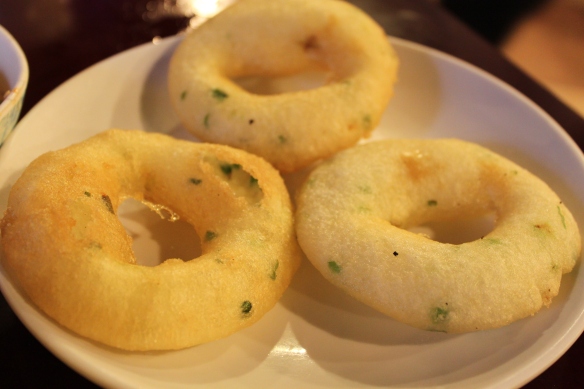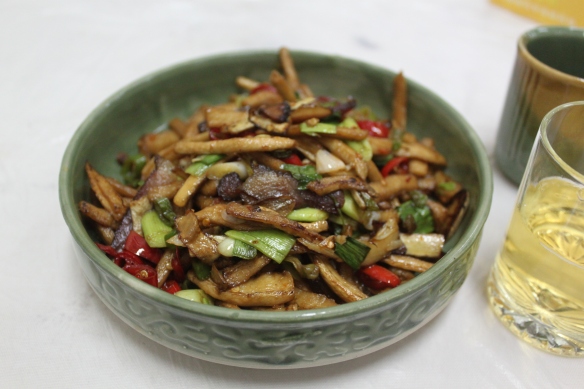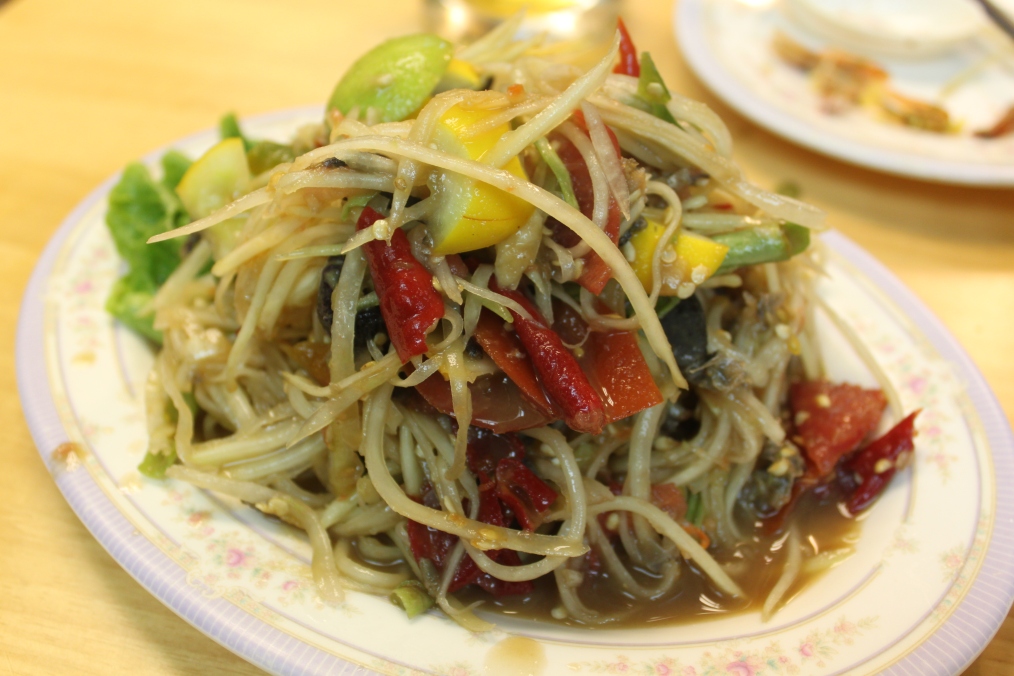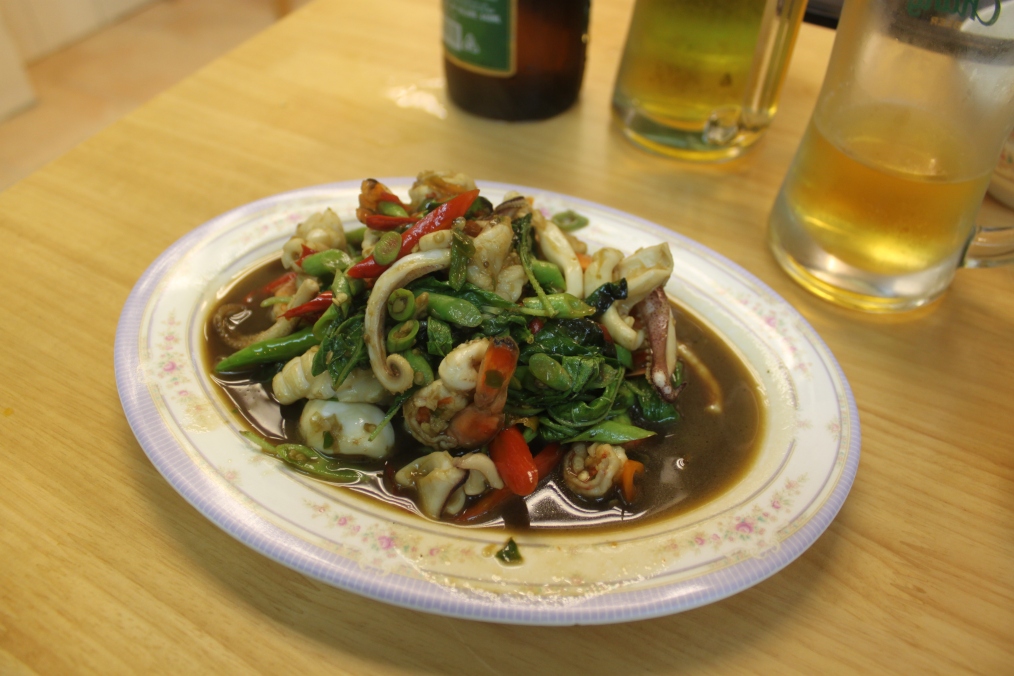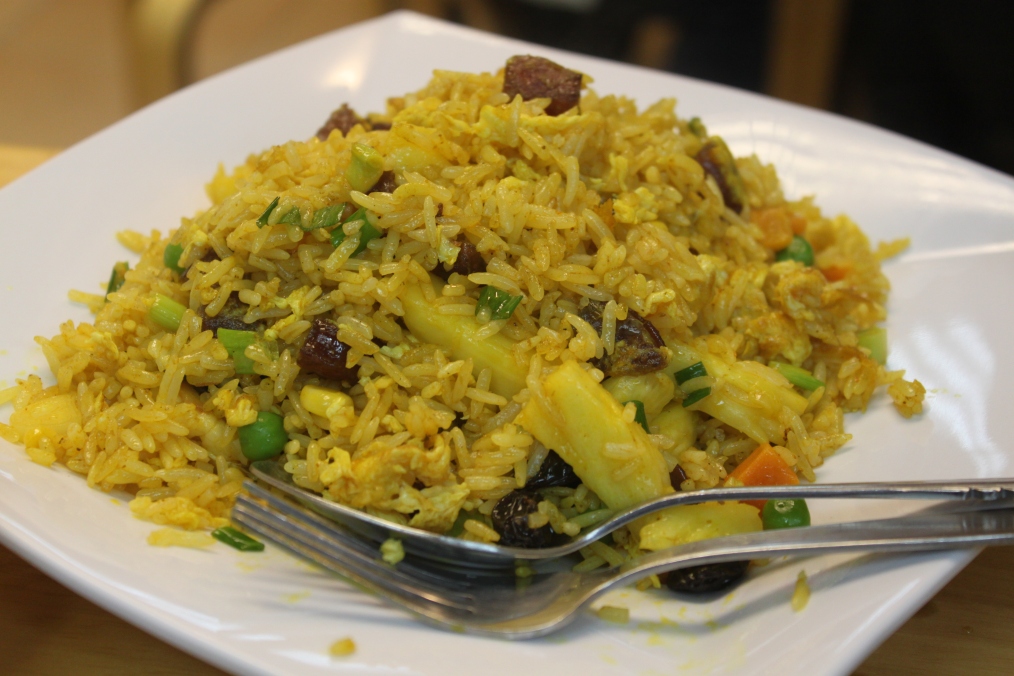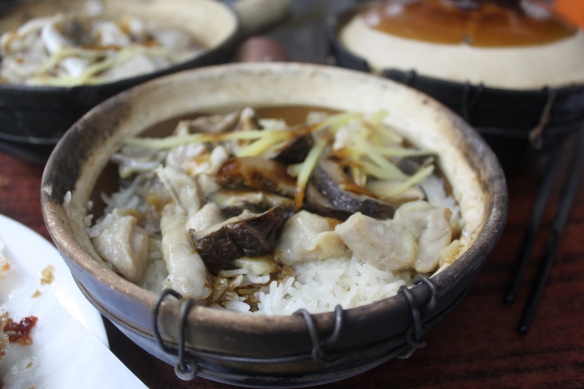This place sits with its big windows glowing on the second floor of a building next to the Mid-Levels escalator and I’d noticed it many times when passing by on my way up. It advertises itself as offering quick pasta and drinks in a cafe style setting. The other night around 7pm, I wanted a quick bite before heading on somewhere else and thought that this might be exactly what I was looking for.
I clambered up the stairs into the large interior, all white and brightly lit by clinical white lighting. The place was eerily empty. Two ladies sat behind the counter in an open kitchen area, staring down at the phones with their headphones in. I kind of awkward disturbing them to ask if the place was even open. They gave me looks that really seemed to grudge my intrusion on whatever they were doing. They didn’t speak much English and just sort of pointed over at another lady who was looking at her macbook behind a counter in the corner. I went over to her and she pointed at the big board with different, appetizing pictures of the pasta dishes.
I chose the carbonara, which was one of the cheapest pastas on offer at HK$60. Then I went and sat down in the spookily silent restaurant, bathed in the bright glow. As I passed the kitchen area, I did see one of the ladies putting some cream in a frying pan, suggesting that at least the sauce was freshly made. I wanted to use the wifi (they advertise it as being free) but couldn’t find anyway to do this and after the less than friendly reception I didn’t really want to ask.
After about ten minutes, they brought the pasta over to me. The portion was pretty small for the price, and looked even smaller because it was served on a large flat plate. The sauce spread out across this from the small heap of pasta in the middle. This sauce was pretty watery and had a very bland taste. It seemed like watered down cream, without any strong Parmesan or cheese flavour to it at all. Because the spaghetti used was the really slippery pale kind, this light sauce just slid off it so it was really hard to eat the two together. Instead of bits of pancetta, the pasta had big flat squares of fried ham in it that really didn’t work. The dish also needed a lot more pepper, preferably of a much coarser grind. Overall it tasted like a cha chaan teng attempt at Carbonara, a long way from anything authentic.
Te strikes me as a really nice idea. A casual, reasonably priced pasta place would be a great addition to Soho or even other parts of HK. But in Te’s case it seems like the idea is poorly executed. Based on the dish I had, it seems like they are cost cutting on the pasta to the extend where the quality and size just aren’t good enough. That’s perhaps why it was empty at a peak dining time.
Directions
1/F, Cheung Hing Commercial Building, 37 Cochrane Street, Central
中環閣麟街37號祥興商業大廈1樓









